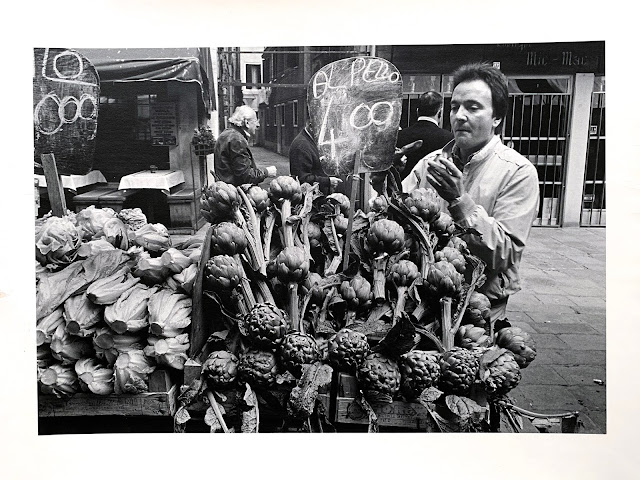My iPhone XR is an unusual copy stand camera. One side or the other of the image I'm shooting is always "toned" or darker in the corners. It's because I'm lazy about stuff like this and not willing to do much more than lay a print down and shoot with the light coming through my windows.
I see images on the blog as illustrations of something also written down, like notes, not as "Art" in a standalone gallery.
This image was taken 30 or so years ago and what I wanted to draw attention to is the wonderful texturing of the vegetables. The image started life as a black and white snapshot, on Tri-X, in an old Leica CL with the little 40mm Summicron on it. I printed it on a matte surface paper (probably Kodak's Ektalure G) in my studio's darkroom; back when I had the studio on San Marcos St. in east Austin.
I liked photography life better when shots could be taken that were casual and informative but didn't suffer under the expectations of perfection. Just notes between friends, not a hoary manifesto used to beat each other over the head. Sometimes I didn't even care if a photo was totally in focus as long as the content evoked memories for me that I enjoyed.
I know it's strange now to contemplate Venice, Italy (sans Covid) without pressing crowds, noise, litter and high prices but back when I first visited the city it was so inexpensive that we opted to stay for ten days and roam around. We were traveling in late October and the weather was cool, the skies gray. Our president at the time had just bombed Libya which scared USA tourists from traveling outside the borders at all. Which, of course, meant for us lower hotel rates, easier access to good restaurants and streets no more crowded than the ones at home.
What a wonderful time to travel.











